Digital Poster
Assorted Conditions
ISMRM & ISMRT Annual Meeting & Exhibition • 10-15 May 2025 • Honolulu, Hawai'i

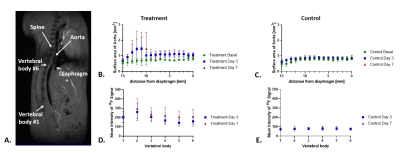 |
Computer Number: 17
3673. Monitoring
of local bone marrow activation during formation of murine
aneurysm by 1H/19F MRI
N. Stumpe, V. Niemann, P. Bouvain, M. Grandoch, U. Flögel
Uniklinikum Düsseldorf, Düsseldorf, Germany
Impact: By identifying early immune responses associated
with aneurysm development, our approach paves the way for
improved detection and treatment strategies, potentially
helping to reduce morbidity and mortality in affected
patients.
|
|
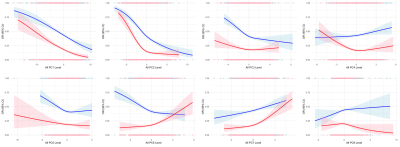 |
Computer Number: 18
3674. The
Association between Body Composition Patterns and
Cardio-Cerebrovascular Disease in the UK Biobank
T. Yang, Y. Hu, X. Han, W. Hu, Y. Dai, Y. Zhou
Renji hospital, School of Medicine, Shanghai Jiao Tong University, Shanghai, China
Impact: These results highlight the potential of body
composition management in reducing the risk of CSVD-CHD
coexistence.
|
|
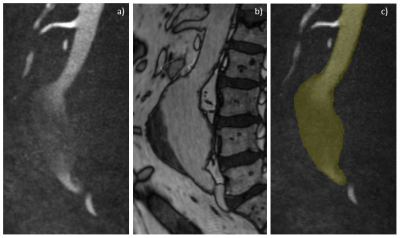 |
Computer Number: 19
3675. Automated
post-processing of longitudinal 4D flow MRI in patients with an
abdominal aortic aneurysm
E. Aalbregt, W. Stehling, R. Merton, M. Goossens, K. van
Duuren, J. van Schuppen, O. Gurney-Champion, K. K. Yeung, A.
Nederveen, E. Schrauben, P. van Ooij
Amsterdam UMC, Amsterdam, Netherlands
Impact: We developed an automated pipeline for improved
segmentation, aneurysm extraction and 4D flow MRI parameter
calculation in patients with abdominal aortic aneurysms and
provided initial results based on a longitudinal dataset.
Ultimately, these insights may enhance rupture prediction.
|
|
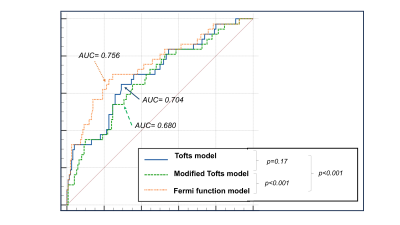 |
Computer Number: 20
3676. Diagnostic
Accuracy of Quantitative Perfusion MRI for Detecting Coronary
Artery Disease: Comparison of Model-Based Deconvolution
Techniques
N. Hashimoto, M. Ishida, M. Takafuji, H. Ito, T. Kokawa, S.
Araki, S. Yamaguchi, M. Fujita, S. Nakamura, T. Kurita, K.
Dohi, H. Sakuma
Department of Radiology, Mie University Hospital, Tsu, Japan
Impact: Dual-sequence quantitative myocardial perfusion
MRI using model-based deconvolution techniques enables
accurate detection of significant coronary artery disease.
Among the deconvolution models, the Fermi function model
demonstrated the highest diagnostic accuracy, outperforming
both the Tofts and Modified Tofts models.
|
|
 |
Computer Number: 21
3677. Ventriculo-Arterial
Coupling estimation by Cardiac MRI as a potential biomarker in
patients with repaired Tetralogy of Fallot
T. Shimfessel, M. Gusseva, A. Tandon, A. Valente, T. Geva,
A. Marenco, P. Beerbaum, T. Pickardt, S. Sarikouch, R.
Chabiniok, G. Greil, T. Hussain
University of Texas Southwestern Medical Center, Dallas, United States
Impact: CMR-derived Ventriculo-Arterial Coupling (VAC)
ratio accurately reflects the invasively derived VAC and may
be used as an indicator for possible future cardiac events
and therefore improve risk stratification in patients with
repaired Tetralogy of Fallot.
|
|
|
Computer Number:
3678. WITHDRAWN |
||
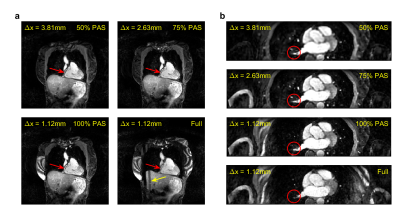 |
Computer Number: 22
3679. Subdivided
High-resolution Angiography with Reconstruction of Exchanged
Data (SHARED)
D. Lichthardt, M. Schmidt, J. Wetzl, A. Nagel, D. Giese
Friedrich-Alexander-University Erlangen-Nürnberg, Erlangen, Germany
Impact: Multiple breath-held scans with predictable
timings yield high-resolution angiography images. The first
scan is used for automatic view planning and, unlike
dedicated localizers, contributes to diagnostic images.
Online reconstruction after each breath-hold enables
increasing spatial resolution with every breath-hold.
|
|
 |
Computer Number: 23
3680. Comparison
of 3D Whole Heart PSIR and Dixon Sequences in Detecting Left
Atrial Fibrosis in Patients with Atrial Fibrillation
J. Jiang, Q. Xu, X. Wang, T. Wang, S. Gong, J. Zhang, R. Qi
The Affiliated 2 Hospital of Nantong University, Nantong, China
Impact: The 3D Dixon sequence provides improved image
quality and efficiency in detecting left atrial fibrosis,
offering potential for optimized diagnostic workflows and
improved patient outcomes in atrial fibrillation management.
|
|
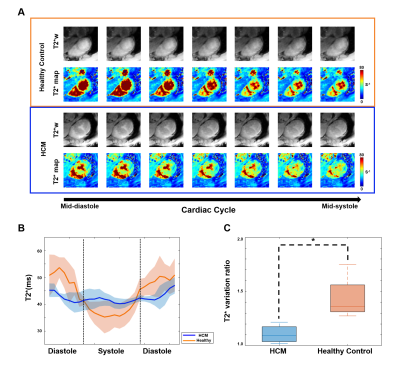 |
Computer Number: 24
3681. Cardiac
Motion-Resolved 3D Whole-Heart Myocardial T2* Mapping Reveals
Diminished Cyclic Response in Hypertrophic Cardiomyopathy at
1.5T
Y. Huang, C-H Yun, X. Guan, L-T Huang, S. Shalikar, F.
Rader, M. Ahmed ZakiAl-Ani, J. Wei, A. Kwan, C. Nguyen, X.
Bi, D. Li, T. Niendorf, M-C Ku, R. Dharmakumar, H-J Yang
Indiana University School of Medicine , Indianapolis, United States
Impact: This study applied a free-breathing,
cardiac-phase-resolved whole-heart T2* mapping technique for
assessing T2*variations across the cardiac cycle. Although
additional validation is needed, our early findings
demonstrate the approach's potential to assess changes in
myocardial oxygenation impairments associated with
hypertrophic cardiomyopathy.
|
|
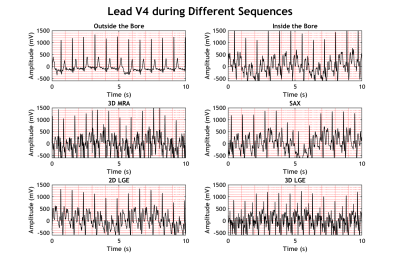 |
Computer Number: 25
3682. 12-lead
ECG Recording in Patients with Cardiac Devices Undergoing a
Cardiac MRI Scan – Initial Experiences
P. Reitzema, K. Dalstra, I. Götz, J. Harbers, M. Boonstra,
J. Ward, L. Hopman, P. Bhagirath, A. Nederveen, M. Götte
Amsterdam UMC, Amsterdam, Netherlands
Impact: This pilot study presents the first real-world
clinical application of MR-compatible 12-lead ECG for
routine CIED patient monitoring and highlights the need for
tailored filtering solutions to mitigate MRI
sequence-induced noise and improve patient monitoring during
CMR.
|
|
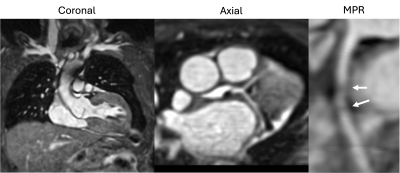 |
Computer Number: 26
3683. 3D
Whole-Heart Coronary Magnetic Resonance Angiography at 0.55T: A
Clinical Feasibility Study in Patients with Cardiovascular
Disease
S. Littlewood, C. Castillo-Passi, M. Crabb, D. Si, A.
Fotaki, K. Kunze, C. Prieto, R. Botnar
King's College London, London, United Kingdom
Impact: This work demonstrates the feasibility of
coronary artery assessment using 3D CMRA at 0.55T in
patients with cardiovascular disease.
|
|
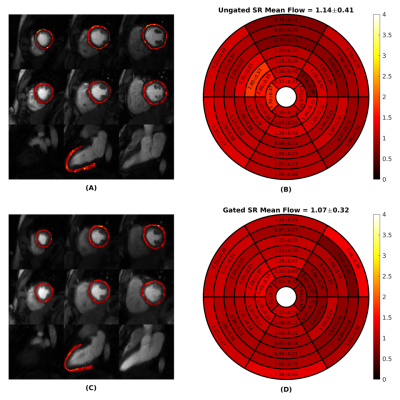 |
Computer Number: 27
3684. A
comparison of ungated radial SMS and ECG-gated myocardial
perfusion MRI
J. Le, J. Mendes, A. Arai, R. Ranjan, E. DiBella, G. Adluru
University of Utah, Salt Lake City, United States
Impact: The ungated radial SMS saturation recovery
sequence could allow for increased robustness to ECG-related
issues commonly seen in atrial fibrillation.
|
|
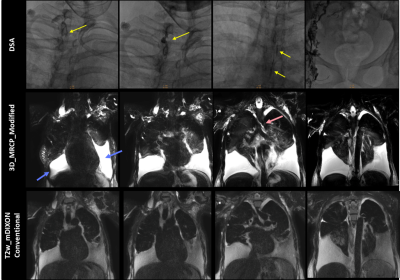 |
Computer Number: 28
3685. Using
MR properties of Chyle for optimizing the MR Lymphangiography
sequence: Preliminary Results
M. Gunasingh, N. Chidambaranathan, J. Neelavalli, N. K.
Rolla
Philips India Limited, Chennai, India
Impact: The relaxation properties of Chyle improved the
sensitivity in visualization of the central lymphatics and
mapping of the lymphatic system which plays a vital role in
the diagnosis and management of lymphatic disorders.
|
|
 |
Computer Number: 29
3686. Non-contrast
3D MR Lymphangiography using dual inversion recovery
tissue-specific image contrast optimization (DIRECTION)
K. Kodaira, M. Nagao, M. Yoneyama, Y. Katsumata, H. Hamano,
M. kato, T. Ogawa, Y. Hamatani, I. shiina, Y. Goto, S. Sakai
Tokyo Women’s Medical University, Tokyo, Japan
Impact: DIRECTION provide anatomical information on
lymphatic vessels involving background tissue, which may be
clinically useful in diagnosing lymphatic congestion and
lymphatic leak, and in diagnosing lymphatic vessels pre
interventional radiology and surgical procedures.
|
|
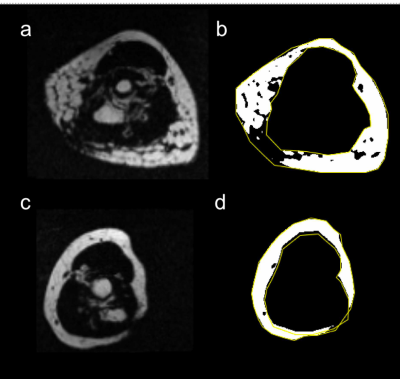 |
Computer Number: 30
3687. Correlations
between regional adipose gene expression and MRI findings in
patients with upper or lower extremity lymphedema
C. Kim, G. Westcott, G. Varma, M. Emont, J. Fanning, A.
Turcu, D. Singhal, L. Tsai
Beth Israel Deaconess Medical Center, BOSTON, United States
Impact: Future applications will evaluate these gene
expression patterns and imaging features, including
radiomics, in cases of early/equivocal lymphedema to assess
gene changes that correlate with duration/severity of
disease to provide insight into the natural history and
pathophysiology of lymphedema.
|
|
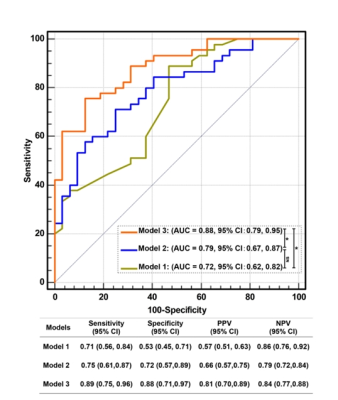 |
Computer Number: 31
3688. Cardiac
MR Feature Tracking Derived Strain Analysis can Predict Return
to Training following Exertional Heatstroke.
W. J. Zhu, J. Zhang
Department of Radiology, Jinling Hospital, Affiliated Hospital of Medical School, Nanjing University, Nanjing, China
Impact: This study emphasized the importance of 2D-GLS
function in the prognosis of RTT in patients with EHS, and
provides a basis for guiding treatment to improve the
clinical outcome of patients.
|
The International Society for Magnetic Resonance in Medicine is accredited by the Accreditation Council for Continuing Medical Education to provide continuing medical education for physicians.